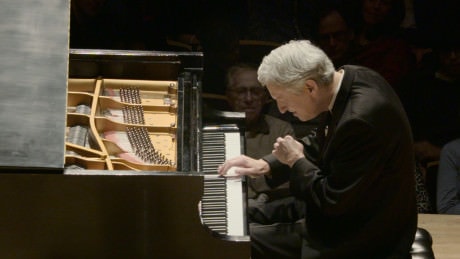Brian Ganz is continuing to complete his performances, and ultimately, recording of “ever single note Chopin composed.” The Ganz Project is expected to take ten years as Chopin’s ouevra contains at least 250 works. Ganz has relished the opportunity to immerse himself in what he calls the “small world” of his favorite composer. Ganz believes that the discipline of brief pieces reflects an editing out and a sampling of potential other pieces which Chopin chose not to write or from which the essence was retained. In this particular performance he explored the Mazurkas.

From his early years right here in Columbia, Maryland, Ganz has attained the stature of one of leading pianists of his day. Well known in particular to the Strathmore audience, he was enthusiastically received last night. He has often described the origin of this project when at age 11 he had an epiphany while listening to a recording of Ballade No. 1 n G Minor, Opus 23, played by Witold Malcuzynsky. He reports that he knew then that music was the direction his life would take. And now he has realized that dream, and shared it with us.
Future Brian Ganz Chopin Projects recitals will include all the chamber music and songs as well as the complete solo works, including each version of every mazurka and waltz. Ganz will also play little known works such as the variation Chopin wrote for Hexameron, a rarely hard work initiated by Chopin’s friend, composer and pianist Franz Liszt.
Tonight’s performance included:
- Four Mazurkas, Op. 24
- Polonaise in F-sharp minor, Op. 44
- Three Mazurkas, Op. 50
- Three Waltzes, Op. 64
- Nocturnes Op. 15, Nos. 2 and 3
- Three Mazurkas, Op. 59
- Rondo a la Mazur, in F Major, Op. 5
Ganz explained each of the forms, describing the Mazurkas as a sort of folk dance and the Polonaise as a stately court dance or a royal ceremonial march. Polonaises had become symbols of Polish nationalism for Chopin and his countrymen and became a symbol of the Poles’ struggle for independence, explaining his proliferation of pieces using this form, and ultimate abandonment of any attempt to make them danceable.

The evocative and lyrical qualities of these pieces was engaging and Ganz was able to explore the qualities of Chopin’s music which were innovative and distinctive. His use of a “Where’s Waldo” exercise to demonstrate the difference between music intended for dance was fun and proved the point that without analysis listeners can intuitively understand the composer’s intent. Of course, a little body language on the part of the pianist helped a lot!
Running Time: One hour and 25 minutes, with a short intermission.
National Philharmonic: Brian Ganz Plays Chopin was performed on Saturday, February 7, 2015 at the Music Center at Strathmore – 5301 Tuckerman Lane, in North Bethesda, MD. For future events at Strathmore, go to their calendar of events.
LINK
Brian Ganz’s website.




